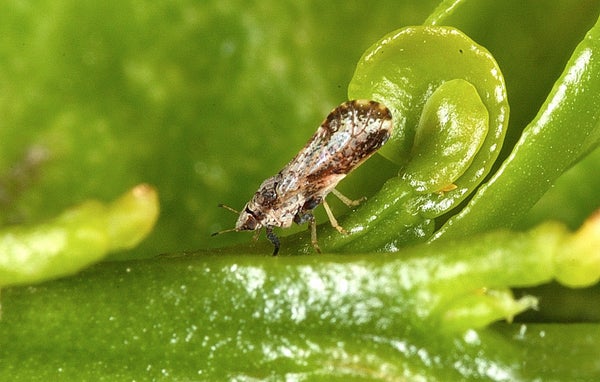When the Obama administration thawed relations with Cuba in 2014, Jiri Hulcr, an entomologist at the University of Florida, and a team of researchers began an unprecedented scientific endeavor: to discover the island’s potentially invasive pests and gauge the state of Cuba's biosecurity, with funding from the United States Department of Agriculture (USDA).
The teams' findings—yet to be published—are worrying. Not only were Cuban scientists largely unaware of potentially destructive pests already on the island—such as unknown species of borer beetles—but their technological capabilities for screening imports were also woeful. Moreover, Hulcr’s team found virtually no communication between Cuba and the United States on biosecurity, meaning the prospect of passenger pests could be a serious issue. Now, the Trump administration’s tough stance on the island nation further threatens necessary technological aid and communication between U.S. and Cuban scientists and officials.
“We know now that Cuba has limited capacity to truly, honestly determine pests on their cargo,” Hulcr says. “So if something gets established in Cuba we don’t even know about it.” Neighboring islands are less of a concern, Hulcr notes. U.S. authorities have a much clearer idea of their pest control thanks to stronger binational relationships. “If a pest showed up in any of these other countries there’s a good chance we’d know about it pretty quickly,” he says.
On supporting science journalism
If you're enjoying this article, consider supporting our award-winning journalism by subscribing. By purchasing a subscription you are helping to ensure the future of impactful stories about the discoveries and ideas shaping our world today.
Complicating matters is Cuba’s soon-to-be-completed deepwater terminal, Port of Mariel, which the country intends as a regional shipping hub. Many of the ships will come from Asia, the origin of much of North America’s invasive pests. "We’re more worried about pests that come throughCuba” compared with other island ports, Hulcr says.
Although the team was able to take three trips to Cuba beginning in 2016, in some instances government authorities barred Hulcr’s team from visiting requested sites, such as agricultural fields. What the U.S.-based team did see spoke volumes, however. In Cuban screening labs, scientists used outdated technology, such as 1960s-era Soviet microscopes. Preserved specimen collections the team visited in Havana–critical resources for determining the identity of unknown pests–were “laughable,” says Hulcr: dusty with no air conditioning and lots of empty display cases.
It is more than just the quality of research on the topic that is alarming. With only about 100 miles of ocean between the two countries, invasive pests in Cuba could make it to the U.S. without warning. “Once these pests get to Cuba, then it just takes, really, a hurricane or a piece of flotsam floating over to get these things here,” says Damian Adams, an economist from the University of Florida (UF) School of Forest Resources and Conservation involved in the project. Scientists suspect, for example, that citrus greening—a disease spread by the Asian citrus psyllid that has caused a crisis for Florida’s citrus industry—originally came from Cuba, says Adams. Among other potential pests, UF researchers confirmed that Cuba is home to coffee borer beetles, a pest that has been ravaging Hawaiian coffee crops.
As things stand, Hulcr’s research project has come to a halt. In March, the USDA rejected the team’s proposal for continued funding. The researchers are now afraid that their tiny window into Cuba’s biosecurity will be closed. “I think at this point the Trump administration isn’t that interested in work that relates to Cuba,” Adams says. “That’s a real problem for American agriculture.”
William Wepsala, spokesman for the USDA’s Plant Health Inspection Service, comments that “to date the project has not identified any significant pests of concern,” and that the agency “chose to prioritize other projects.”
Beyond continuing on-the-ground research, one proactive measure the U.S. can take, Hulcr says, is to “strengthen our surveillance in the ports and airports in the south.” This means putting more scientists in monitoring labs and incorporating better biocontrol surveillance technology, such as X-ray and scent-based monitoring tools. “Currently we rely mostly on visual inspection on only about 1 percent of the cargo that gets in,” Hulcr says. “That has to be increased.”
